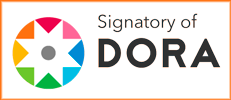The achievements and perspective trends of electrically welded anastomosis
DOI:
https://doi.org/10.34287/MMT.4(43).2019.12Abstract
In result of previous studies, we found the superior qualities of electro-welded intestinal anastomoses had created by using tools and models are suitable for open surgery.
Purpose of the stady. Was to identify promising research trends according to laparoscopic instruments usage for creating electro-welded intestinal anastomoses inside abdomen.
Material and methods. Using a full-size porcine organo-complex, special laboratory tests at the bench, the 160 probes were provided. Initially the pressure of 1,0 to 2,0 N/mm2 (1,0–2,0 × 104 PA) was applied externally to the electrodes. The electrode surface sizes were: 75 mm2 mm for conventional and 30 mm2 for laparoscopic models. Then, using AC amplitude from 200 to 500 V, frequency 466 kHz, intestinal or colon walls’ anastomosis was created. Next the connection strength of the walls was studied by hydrostatic pressure.
Results. During the small intestine fragments welding, using the model of conventional electrodes, that’s peak temperature was 83,7 ± 8,7 °C, during the colon welding – 75,1 ± 11,1 °C. The burst pressure of anastomoses were 5,5 ± 1,1 kPa, 4,7 ± 0,9 kPa, respectively.
During the small intestine fragments welding, using the model of laparoscopic electrodes, that’s peak temperature was 83,1 ± 7,3 °C, during the colon welding – 78,8 ± 9,1 °C. Burst pressure of anastomoses were 6,1 ± 1,2 kPa, 5,0 ± 1,2 kPa, respectively.
Conclusions. The possible way to intracorporeal intestinal anastomosis creation, by using the modified Patonmed EKVZ-300 power source with laparoscopic instruments, is a reduction of electrode’s area and modifying the impulses’ parameters.
References
Jaschinski T, Mosch CG, Eikermann M et al. Laparoscopic versus open surgery for suspected appendicitis. Cochrane Database of Systematic Reviews. 2018; 11: CD001546. DOI: 10.1002/14651858.CD001546.pub4.
Lavryk AS, Mylytsya KM. Gastric plication efficiency at patients with obesity and metabolic syndrome. AML. 2017; 23 (1–2). DOI: 10.25040/aml2017.01.040.
Abraham, NS, Byrne, CM, Young, JM, Solomon MJ. (2007). Meta-analysis of nonrandomized comparative studies of the short-term outcomes of laparoscopic resection for colorectal cancer. ANZ Journal of Surgery. 2007; 77: 508–516. DOI:10.1111/j.1445-2197.2007.04141.x.
Fransvea P, Costa G, Serao A et al. Laparoscopic splenectomy after trauma: Who, when and how. A systematic review. J Minim Access Surg. 2019. DOI: 10.4103/jmas.JMAS_149_19.
McCormack K, Scott NW, Go PM, Ross S, Grant AM. Collaboration the EU Hernia Trialists. Laparoscopic techniques versus open techniques for inguinal hernia repair. Cochrane Database Syst Rev. 2003; (1): CD001785. Review. DOI: 10.1002/14651858.CD001785.
Zhao J, Chen N, Zheng J et al. Laparoscopic versus open surgery for rectal cancer: Results of a systematic review and meta analysis on clinical efficacy. Molecular and Clinical Oncology. 2014; 2: 1097–1102. DOI: 10.3892/mco.2014.345.
Ding Z, Wang Z, Huang S et al. Comparison of laparoscopic vs. open surgery for rectal cancer. Molecular and clinical oncology. 2017; 6 (2): 170–176. DOI: 10.3892/mco.2016.1112.
Ruurda J, Broeders I. Robot-assistedlaparoscopic intestinal anastomosis. Surg Endosc. 2003; 17 (2): 236–241. DOI: 10.1007/s00464-002-9016-2.
Podpryatov SS, Podpryatov CE, Gichka SG et al. Clinical and morphological features of multipoint and linear colonic electrowelded anastomosis. Shpytalna khirurhiya. Zhurnal imeni L. YA. Kovalchuka. 2018; 83 (3): 50–56. DOI: 10.11603/2414-4533.2018.3.922.
Podpryatov SS, Podpryatov CE, Marinsky GS et al. Efficiency of achieving electrical breakdown in the model of intestinal anastomosis with increasing voltage on the welding tool and enhanced mechanical compression. Suchasni medychni tekhnolohiyi. 2018; 38 (3): 35–39.
Downloads
Published
How to Cite
Issue
Section
License
The work is provided under the terms of the Public Offer and of Creative Commons Attribution-NonCommercial 4.0 International (CC BY-NC 4.0). This license allows an unlimited number of persons to reproduce and share the Licensed Material in all media and formats. Any use of the Licensed Material shall contain an identification of its Creator(s) and must be for non-commercial purposes only.














